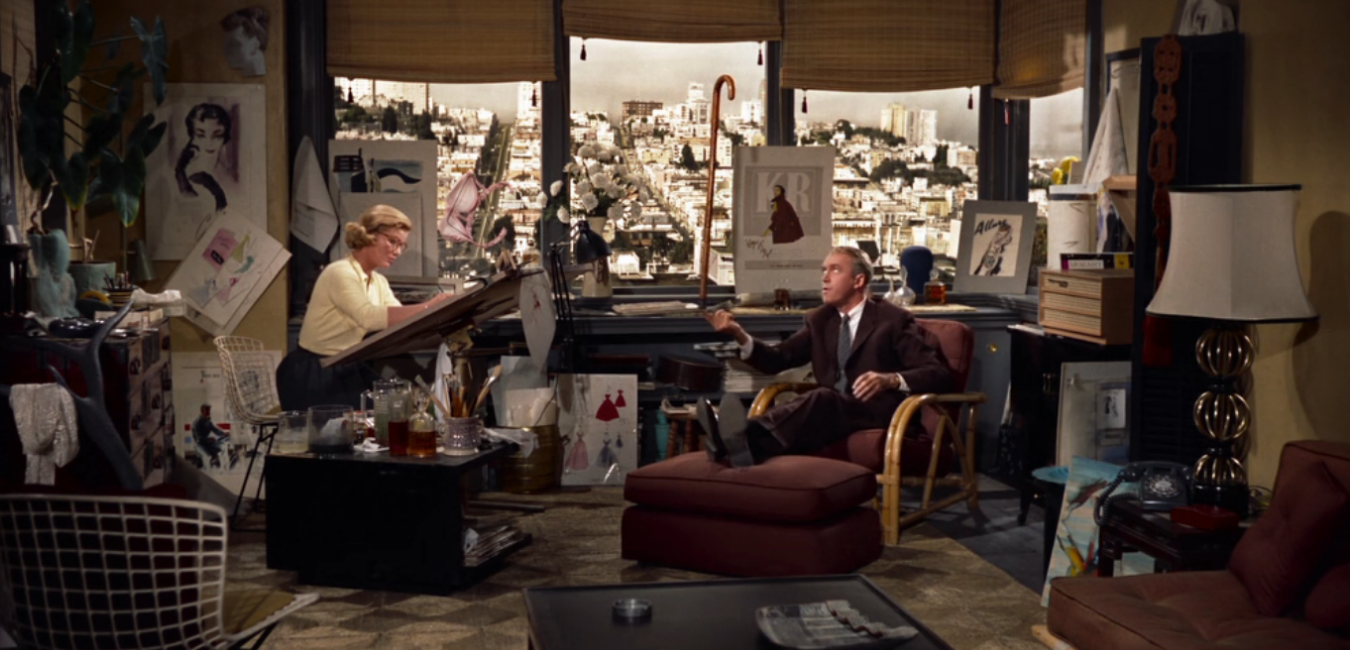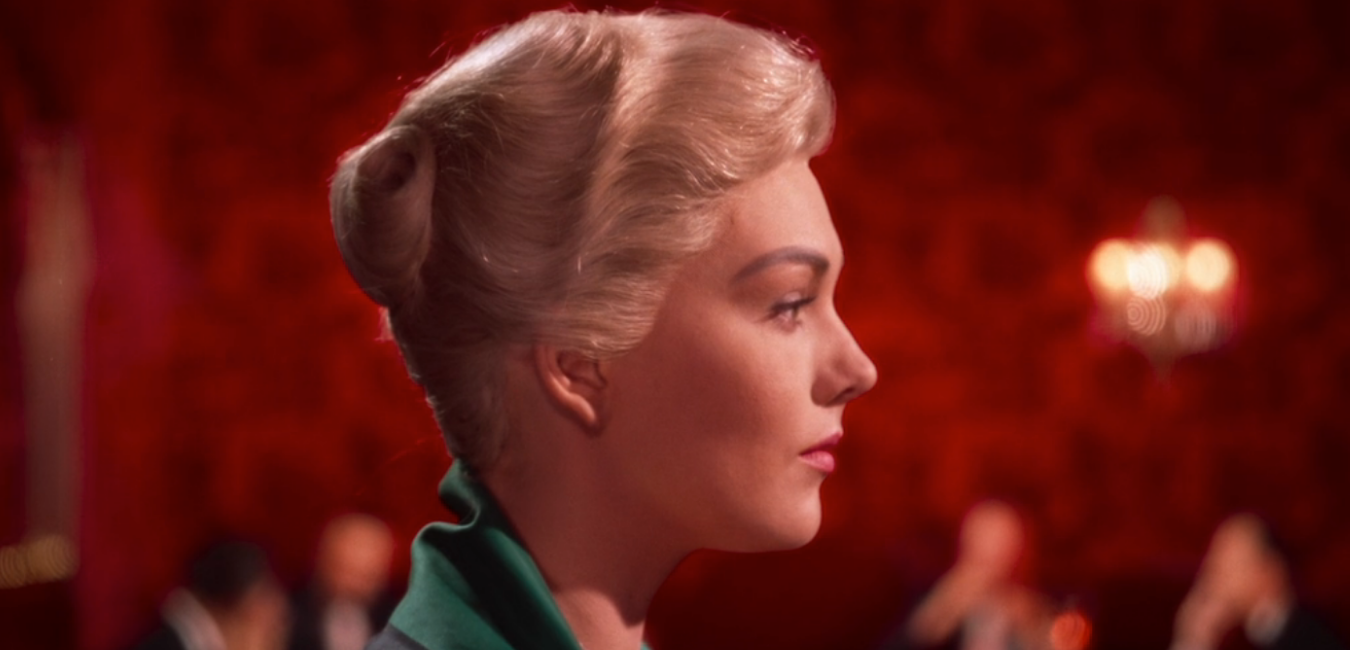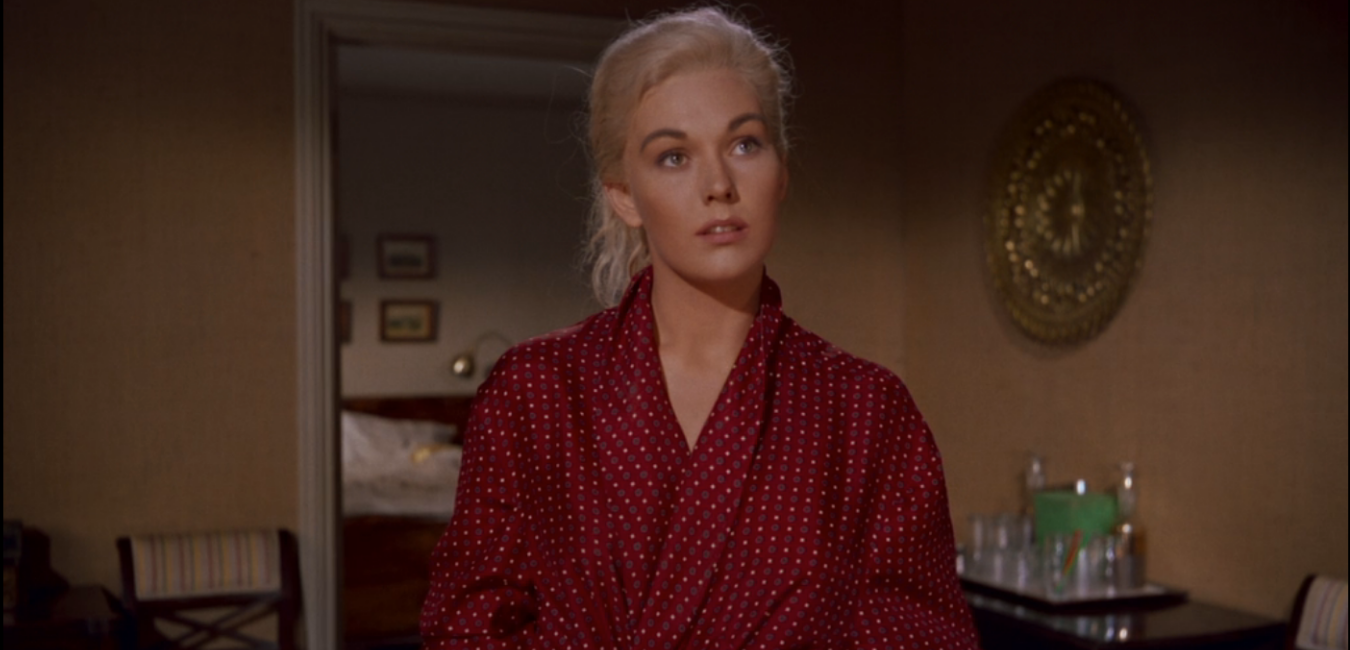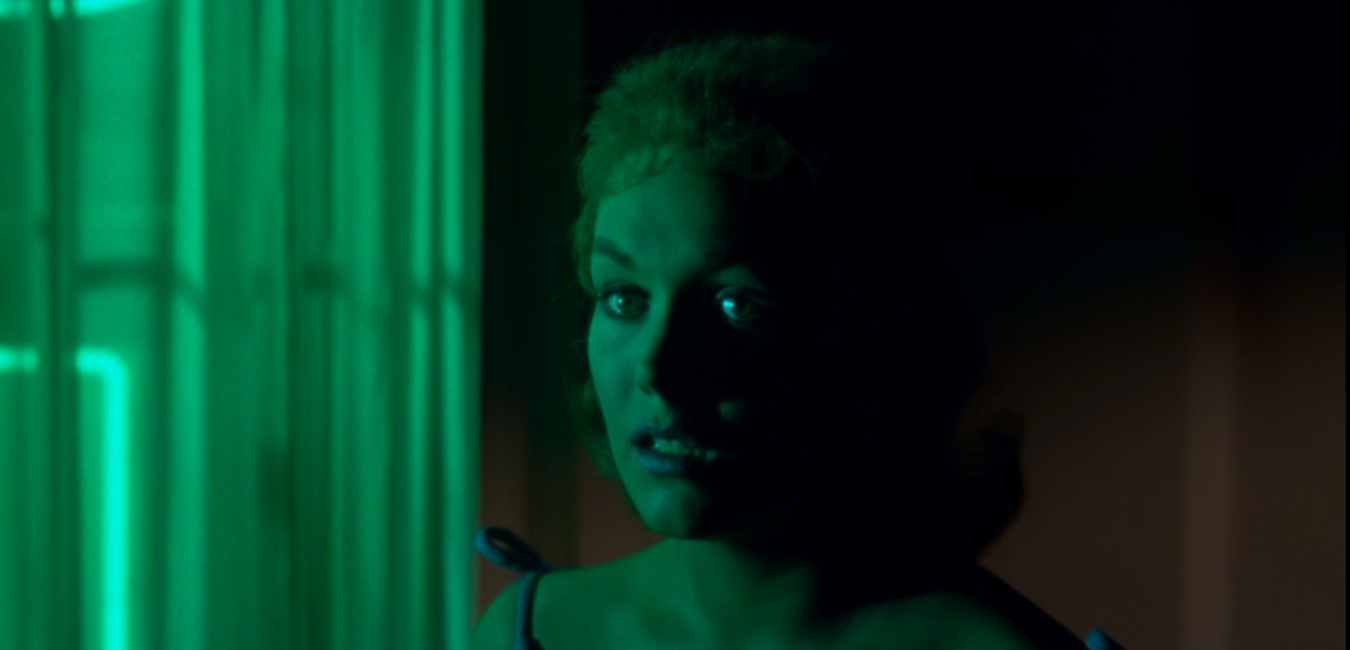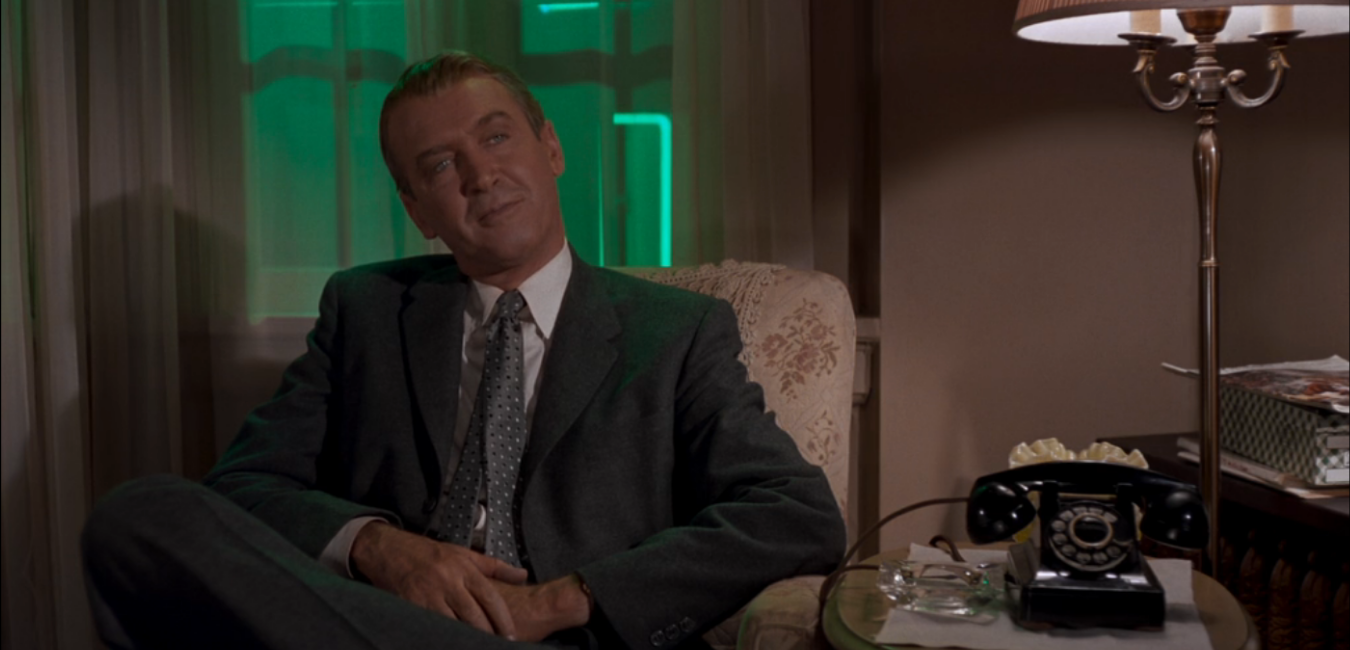Five reasons for film fans to watch 'Vertigo' tonight

James Stewart is vexxed by Kim Novak in the 1958 psychological thriller, “Vertigo.” (Paramount Pictures/MovieStillsDB.com)
"Vertigo"
Released May 9, 1958
Directed by Alfred Hitchcock
Where to Watch
If you have a passing interest in movies, you likely have heard of "Vertigo," even if you've never seen it. It's directed by one of cinema's most recognized and acclaimed filmmakers (Alfred Hitchcock) and stars one of the most famous stars of that era (James Stewart). Since its release in 1958, the film's reputation has only improved. It is now considered Hitchcock's masterpiece and surpassed 1941's "Citizen Kane" on the prestigious Sight and Sound international critic poll as the best movie ever made.
Now, I'm not here to declare whether that ranking is right or wrong, but with all of those accolades, "Vertigo" is very much worth your time. Here's why:
“Vertigo” is a psychological mystery for you to puzzle over long afterward.
Today's audiences are primed to explore rabbit holes and easter eggs to better understand popular mythologies like the Marvel or Star Wars universes. What's fun about "Vertigo" is that its mysteries are contained within a two-hour timeframe, without worrying about prequels, sequels, reboots, or spinoffs. Stewart stars as Scotty Ferguson, a former San Francisco police detective asked by a college friend to investigate the strange behaviors of the friend's wife, Madeline (Kim Novak). Madeline spends her days mysteriously driving around San Francisco, visiting gravesites, hotels, and an art gallery. Scotty begins to accept his friend's suggestion – that Madeline is haunted by a past life – and becomes obsessed with saving Madeline himself. "Vertigo" is a drama about our obsessions and regrets and how they can overwhelm us to the point of psychological transformation. Given Hitchcock's own obsessions with surprise and leading women, it might be one of the most personal movies from his filmography.
"Vertigo" is a masterclass in technique, photography, and cinematography.
If a picture is worth a thousand words, "Vertigo" is the "War and Peace" of film. Hitchcock is at the peak of his ability in this movie, expertly framing shots and scenes from the point of view of his characters. When Scotty begins following Madeline around town, we observe her from a great distance with long shots. The camera only moves closer to these characters when they finally meet and converse with each other. Another key visual element in "Vertigo" is the dolly zoom, devised by second-unit cameraman Irmin Roberts. It's achieved by simultaneously using the camera to zoom in while the camera pulls away, emphasizing the on-screen depth of field while keeping the space within the frame the same. The dolly zoom effect is introduced in the prologue when Scotty engages in a rooftop chase and experiences extreme acrophobia for the first time. It's a potent cinematic effect that has appeared in movies like "Jaws" and The Lord of the Rings trilogy.
Scotty is a creep.
By this point in his career, Stewart was well known as one of the nicest guys in Hollywood thanks to roles like 1939's "Mr. Smith Goes to Washington," 1940's "The Philadelphia Story," and 1946's "It's a Wonderful Life." But by the 50s, he played more ambiguous roles in some of Hitchcock's movies, such as 1954's "Rear Window." "Vertigo" is one of the best performances of his career, as Scotty's emotions overwhelm his intelligence. Midway through the movie, Scotty encounters a woman named Judy, who looks almost exactly like Madeline. His reaction to Judy and desire to remove the "almost" from the previous sentence reveals an unsettling portrait of obsession. Watching Stewart here shows how layered and human of an actor he is.
Colorvision.
Like many technological innovations in film, the addition of color was one of trial and error to find the perfect balance to make a picture stand out. When it comes to this era, "Vertigo" stands tall and true as one of the most colorful, dynamic-looking movies audiences could see. Promoted as a Paramount Pictures "VistaVision" movie (which signified the highest resolution at the time), "Vertigo" is filled with rich colors and shades of red, blue, green, and more, the skin tones of the actors are flattering and appealing, and the light and shadows offer deep contrasts. Think about how many of our modern movies are desaturated to the point where even superheroes looked washed out, and decide for yourself which style is better.
Back to the introduction.
If you made it this far into the article, you're as much of a visual design nerd as I am, so let's circle back to the beginning. The opening credits sequence was designed by famed graphic designer and filmmaker Saul Bass, who started working with Hitchcock on "Vertigo." Bass and Hitchcock would continue to work together for several iconic title sequences, including 1959's "North by Northwest" and 1960's "Psycho." You'll also find an essential work of Bernard Herrmann, one of the most acclaimed and influential film composers in history. Bass and Herrmann are so highly regarded in the industry that Martin Scorsese used them together to introduce 1976's "Taxi Driver," which would be Herrmann's final score before his death. The concept of a stylized, designed sequence for credits would be used in many movies after "Vertigo," including the James Bond and Marvel Studios films.
Hitchcock found the story of "Vertigo" in the 1954 novel "D'entre les morts" by French crime writers Pierre Boileau and Thomas Narcejae. Hitchcock talked about the movie's origins in a 1962 interview with French New Wave director Françios Truffaut.
"I was intrigued with the efforts to create a woman out of the image of a dead woman," Hitchcock said. "A very important problem came up with the instruction when I was working on it with the writer. After the death of the first woman from the tower, you literally start a new story. It picks up with a girl, and the main interest is his desire to recreate her in the image of the dead woman. Only at the very end comes the surprise."
"Vertigo" became the kind of movie that would have inspired countless think pieces with today's Internet content machine, as people tried to puzzle out the movie's mysteries. You can catch hints of that in the original reviews from 1958, as The New York Times attempted to parse out clues and hints to entice audiences.
"Coming or not?" wrote Bosley Crowther. "What more's to say? Well, nothing, except that 'Vertigo' is performed in the manner expected of all performers in Hitchcock films. Mr. Stewart, as usual, manages to act awfully tense in a casual way, and Miss Novak is really quite amazing in—well, here is a bit of a hint—dual roles. One more thing: there is a big hole—a big question-mark—at a critical point. It will stop you if you're a quick thinker. But try not to be and enjoy the film."
Upon release, "Vertigo" had a difficult time finding audiences and the marketing had to be retooled to tease the surprises in the movie. The movie ended up breaking even with its budget and grossed less than other successful Hitchcock movies. Appreciation and reassessment for "Vertigo" have increased in the decades since its release. In addition to its consensus high status among various film canons and lists, "Vertigo" also holds Rotten Tomatoes scores in the mid-90s from critics and audiences.
But don't let all this appreciation overhype you, because as "Vertigo" shows us, obsessing over what you want something to be is not recommended behavior. For casual fans of movies, it likely won't matter if "Vertigo" is better than "Citizen Kane" or "Happy Gilmore." What matters is if a film can engage us, compel us, and surprise us with an experience we'll never forget. And it's hard to imagine a situation where "Vertigo" fails.
Next Week: "Top Gun"
Mark is a longtime communications media and marketing professional, and pop culture obsessive.
